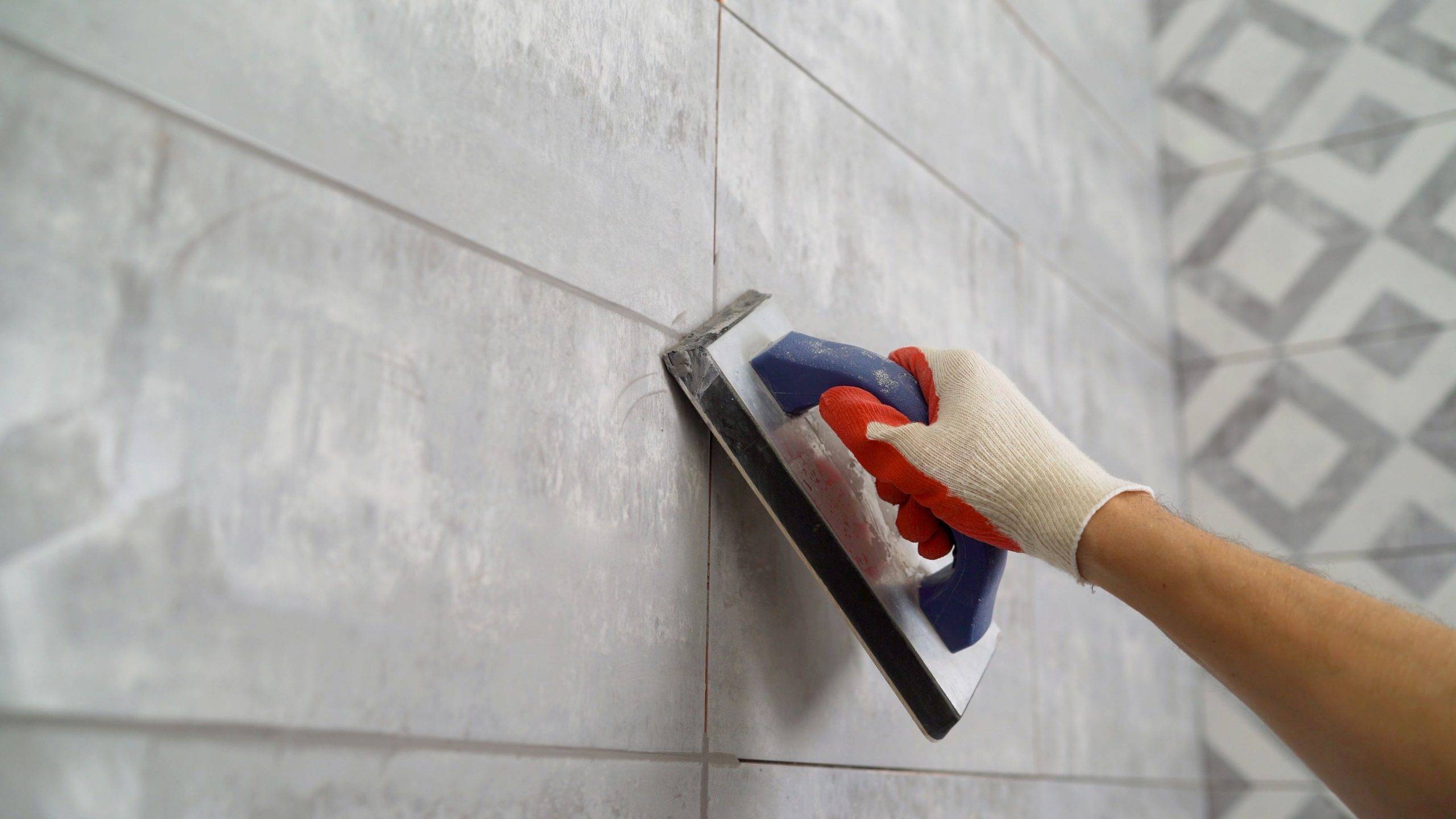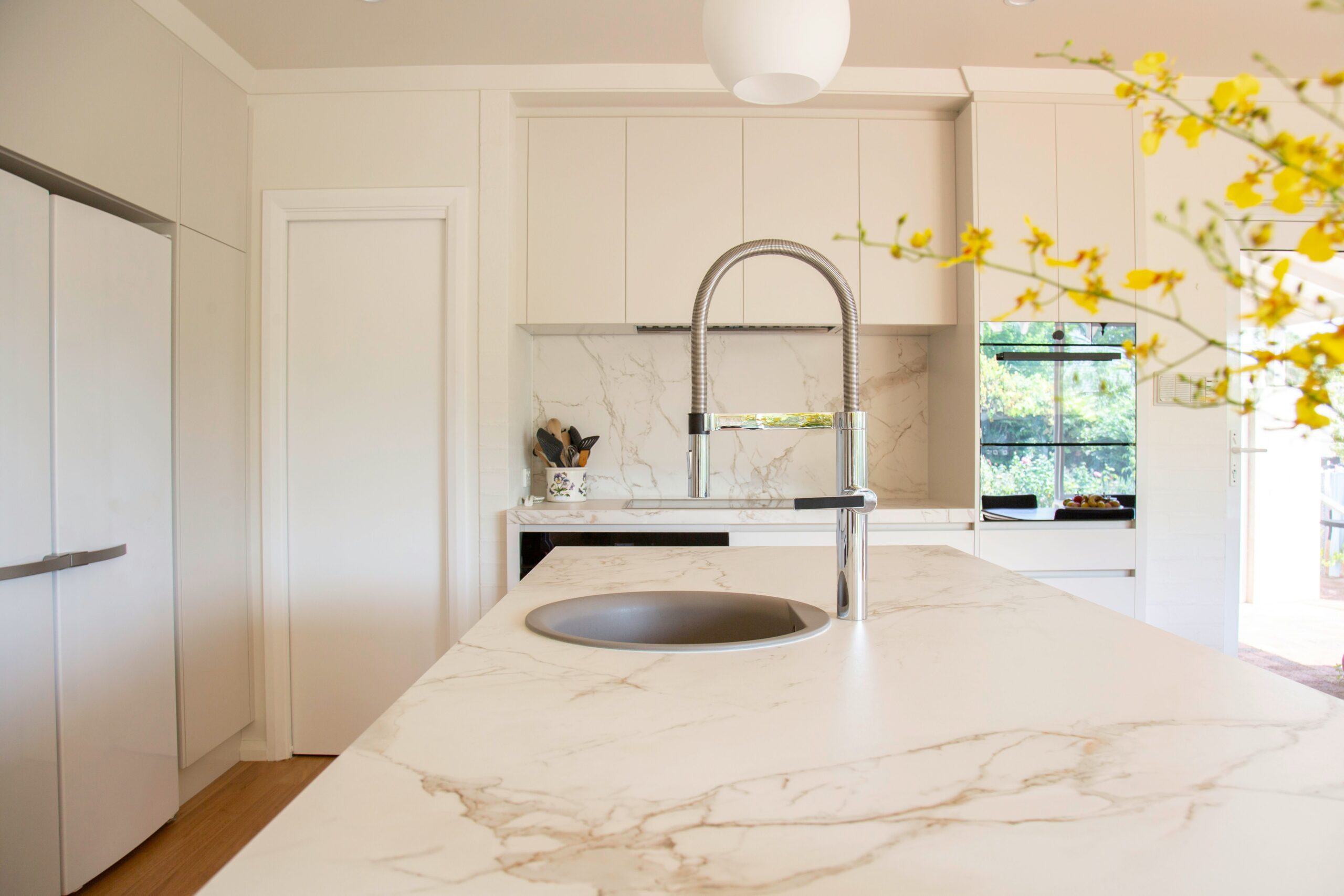
The Surprising Benefits of Regrouting Your Bathroom and Floor Tiles
Epoxy grout is resistant to cracking, shrinking, and discolouration, making it perfect for use in wet areas
When you step into a space adorned with stone finishes, the grandeur and elegance are often undeniable. Two of the most prominent materials used to create such an atmosphere are marble and granite. Each possesses unique characteristics that cater to different tastes and functions.
Marble is a metamorphic rock, which forms through the transformation of limestone or dolomite under intense heat and pressure. This results in a stone renowned for its rich veining and a spectrum of color variations, derived from mineral impurities within the original sedimentary rock. Its relatively softer nature on the Mohs scale of mineral hardness (3-4) reflects in its luxurious feel but also demands careful consideration regarding where and how it’s used.
Granite, by contrast, is an igneous rock formed from cooled magma deep within the Earth’s crust. It boasts high durability due to its dense grain structure, making it significantly harder (6.5 on the Mohs scale) than marble. The appearance of granite is typically speckled, owing to the mineral crystals it contains, which add depth and interest to its finish.
Understanding these differences between marble and granite is crucial when selecting materials for various applications such as countertops, flooring, or wall cladding. You will learn about their distinct properties related to composition, durability, aesthetics, cost comparison, and suitability for different environments. By being informed about these aspects, you can make decisions that ensure both beauty and longevity for your stone surfaces.
For those who already have marble or granite installations in their spaces, urban stone restoration can be an essential service for maintaining the appearance and integrity of these natural stones over time. Whether considering marble natural stone benchtop restorations or other stone care needs, professional advice and service can greatly extend their life and beauty.
Marble and granite have distinct characteristics that set them apart from each other. Understanding their composition and formation can help you make informed choices when it comes to using them in your space.
Marble starts its journey as limestone or dolomite, which are sedimentary rocks. Under immense heat and pressure beneath the Earth’s surface, these rocks undergo a transformation, turning into marble. This process leads to the formation of interlocking carbonate crystals that give marble its strength and elegant veining.
Unlike marble, granite has an igneous origin. It is created when molten magma cools and solidifies deep within the Earth. Granite is made up of various minerals like quartz, feldspar, and mica that crystallize together, resulting in its distinctive grainy texture and strong structure.
The differences between marble and granite can be summarized as follows:
To understand how hard or resistant a stone is to scratches and damage, the Mohs scale is commonly used. It ranks minerals on a scale of 1 to 10 based on their hardness, with 1 being the softest and 10 being the hardest.
This significant difference in hardness between marble and granite highlights their varying levels of durability.
The disparity in hardness between marble and granite can impact your material selection for different areas in your home or business:
Understanding these fundamental distinctions helps in appreciating why each stone type may be better suited to different environments or uses. For further reading on stone restoration and preservation practices that align with the unique needs of these materials, visit Urban Stone Care’s blog archives.
When choosing between marble and granite for your home, the durability of the material is a primary concern. Granite, with its dense structure, stands out as a robust contender. Its resilience stems from its igneous origins, rendering it less likely to suffer damage or wear over time. This strength makes granite an excellent choice for high-traffic areas where longevity is a must.
Porosity, meanwhile, is a measure of how many pores or tiny holes a material has. This characteristic directly influences a stone’s stain resistance. Marble tends to have higher porosity levels compared to granite. As such, marble can absorb liquids more readily, which may lead to staining if the spills are not promptly addressed. Granite’s lower porosity gives it a natural shield against stains, making it virtually stain-proof under normal conditions.
However, both marble and granite benefit greatly from regular maintenance. Sealing these surfaces is crucial for preserving their pristine appearance and preventing unsightly stains. A sealer fills in the microscopic pores in the stone surface, creating an impermeable barrier that repels spills and keeps your stone looking new. Professional services like those provided by Urban Stone Care offer specialized sealing solutions that cater to the specific needs of your stone surfaces.
In terms of routine care:
These interventions can restore the surface’s resistance to staining while enhancing its overall aesthetic appeal.
While granite may inherently possess superior durability and stain resistance, marble’s elegance is unparalleled when properly sealed and maintained. Your choice between these two stones should align with your lifestyle needs and aesthetic preferences—each offers a unique set of benefits suitable for different applications in your home.
When selecting stone for your home or project, considering its appearance and overall aesthetics is crucial. Two popular options are marble and granite, each with its own unique characteristics.
Marble is renowned for its timeless and elegant appearance, which includes:
Marble is often regarded as a luxurious material and finds common use in formal settings or as a standout design element. Certain types of marble even possess a translucent quality that allows light to penetrate the stone before being scattered out, creating a unique visual depth.

In contrast, granite is highly valued for its strength and natural appeal. Its visual features include:
Granite comes in an extensive range of colors, spanning from subtle earth tones to bold shades, making it suitable for both modern and traditional styles.
Let’s delve into how marble and granite compare in terms of cost:
The cost can also be influenced by factors such as the rarity of the stone, its source location, and any additional transportation expenses. Nowadays, there’s significant overlap in prices between marble and granite, making both options viable depending on your budget.
For those committed to maintaining their stone floors in excellent condition, it’s worth exploring some effective grout cleaning tips that can be very helpful. Proper maintenance goes beyond just the surface of the stone; it involves taking care of every aspect of your flooring to preserve its overall appearance.
If you’re interested in another luxurious option similar to marble but with a distinctive composite makeup, terrazzo might catch your attention. This material can be revitalized through professional terrazzo restoration services, even if it has endured significant wear and tear over time.
When choosing between marble and granite for different design projects, it’s important to know how well they will work in each situation. Each type of stone has its own strengths and weaknesses when it comes to resurfacing, maintenance, and repair.
Marble is soft and easy to work with when it comes to shaping and polishing. However, this also means that it’s more prone to scratches and wear over time. If you want to change the surface or update the finish of your marble, you need to be careful not to damage it. Resurfacing marble may require professional help from experts who specialize in stone restoration.
On the other hand, granite is much harder and more durable than marble. This makes it more difficult to shape or polish the surface without the right tools and techniques. It’s usually best to leave the resurfacing of granite countertops or floors to experienced professionals. But once it’s been polished or reshaped, granite will maintain its new look for a longer time compared to marble.
When it comes to maintenance, here’s what you need to know about marble and granite:
If your marble or granite surfaces get damaged, here’s what you need to know about repairing them:
Both marble and granite require specific care when it comes to repairs. While there are DIY kits available for minor fixes, it’s recommended to hire skilled professionals for major restorations. They have the knowledge and experience to work with these materials effectively.
Whether you’re dealing with heavily used floor areas or decorative elements, choosing the right repair technique is crucial for maintaining the beauty and durability of your stone surfaces.
Understanding these factors will help you make better decisions about using marble or granite in your home or commercial space. By giving them proper care and considering their unique properties, both materials can bring timeless beauty and functionality to their respective applications.
When you’re deciding between marble and granite for your next project, such as flooring, countertops, or other uses, there are several factors to consider:
Before making your final decision, it’s a good idea to consult with professionals who can offer personalized advice. Speaking with a knowledgeable stone supplier or installer can provide valuable insights into the unique characteristics of each type of stone.
For specialized services related to the care and restoration of these natural stones, consider reaching out to Urban Stone Care. Their expert guidance and proper maintenance can help ensure that both marble and granite bring lasting elegance and functionality to your space.
Readers will learn about the composition, formation, and hardness of marble and granite, their durability, porosity, and stain resistance, as well as their appearance, aesthetics, and cost comparison. The article also discusses the suitability of marble and granite for different applications and provides guidance on choosing between the two materials.
Marble is formed from limestone or dolomite through a process that emphasizes its metamorphic nature.
Granite has an igneous origin and is formed from molten magma.
The article explores the differences in composition between marble and granite that contribute to their unique properties.
Proper sealing and maintenance are crucial for both marble and granite surfaces to prevent staining and ensure longevity.
Marble is known for its veined patterns and a range of colors influenced by impurities.
The article discusses challenges and considerations in resurfacing or altering marble and granite surfaces to suit changing design trends.
Key factors to consider include the differences discussed in the article, as well as consulting with a professional stone supplier or installer for expert guidance.

Epoxy grout is resistant to cracking, shrinking, and discolouration, making it perfect for use in wet areas

Epoxy grout is resistant to cracking, shrinking, and discolouration, making it perfect for use in wet areas

Epoxy grout is resistant to cracking, shrinking, and discolouration, making it perfect for use in wet areas